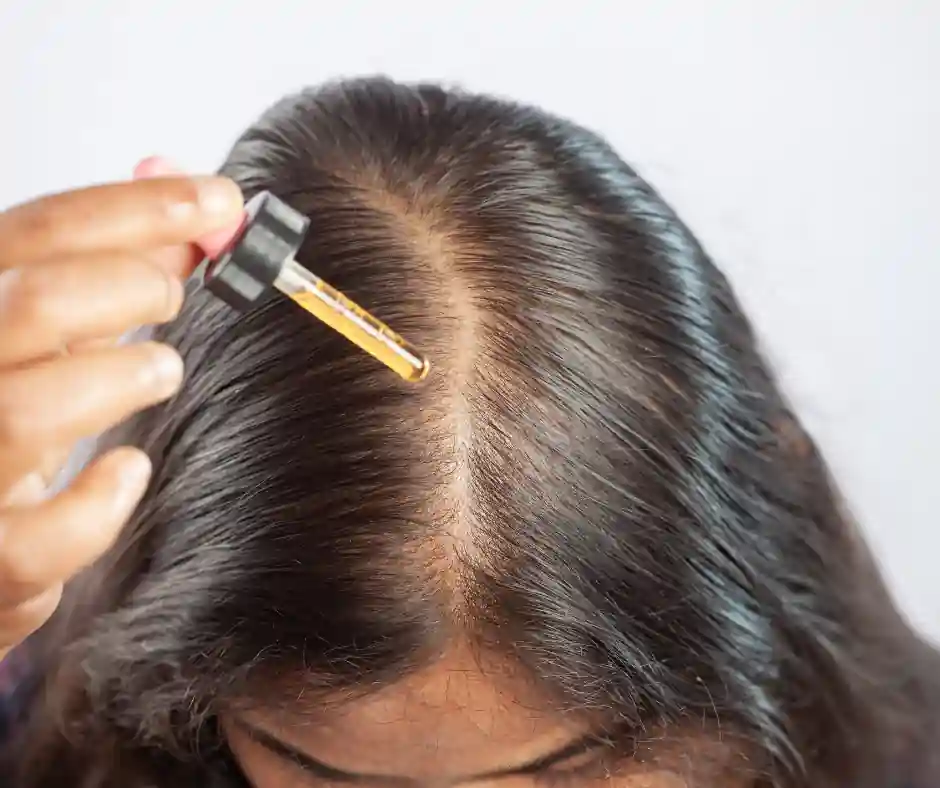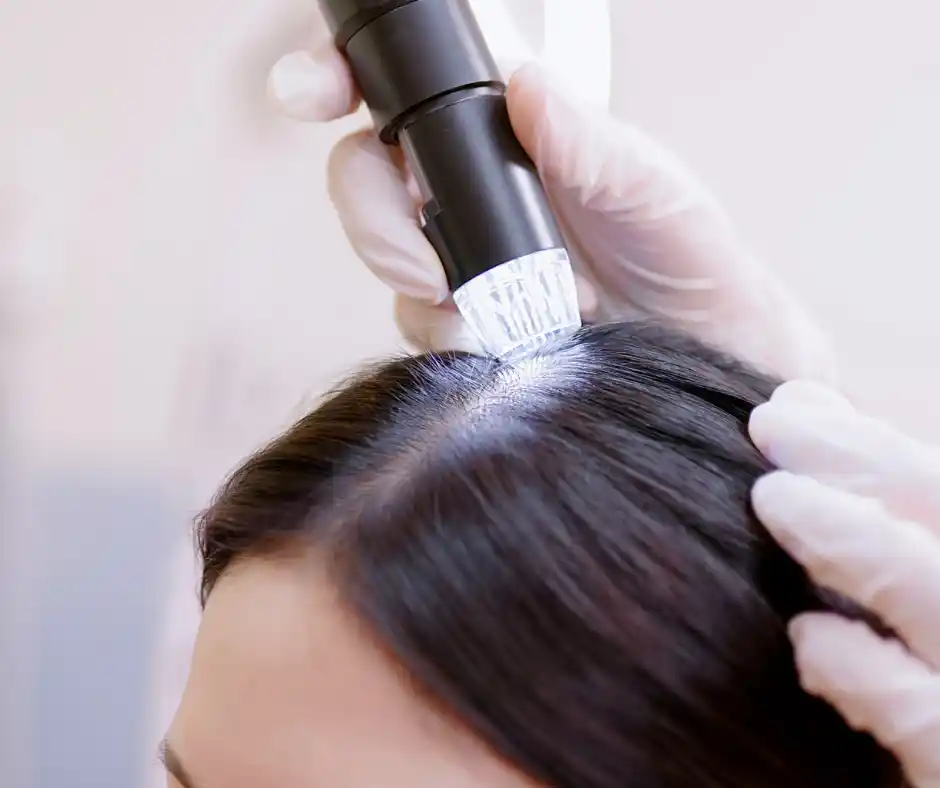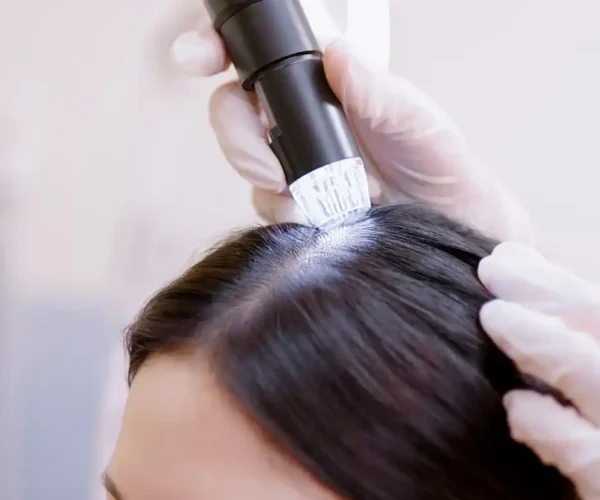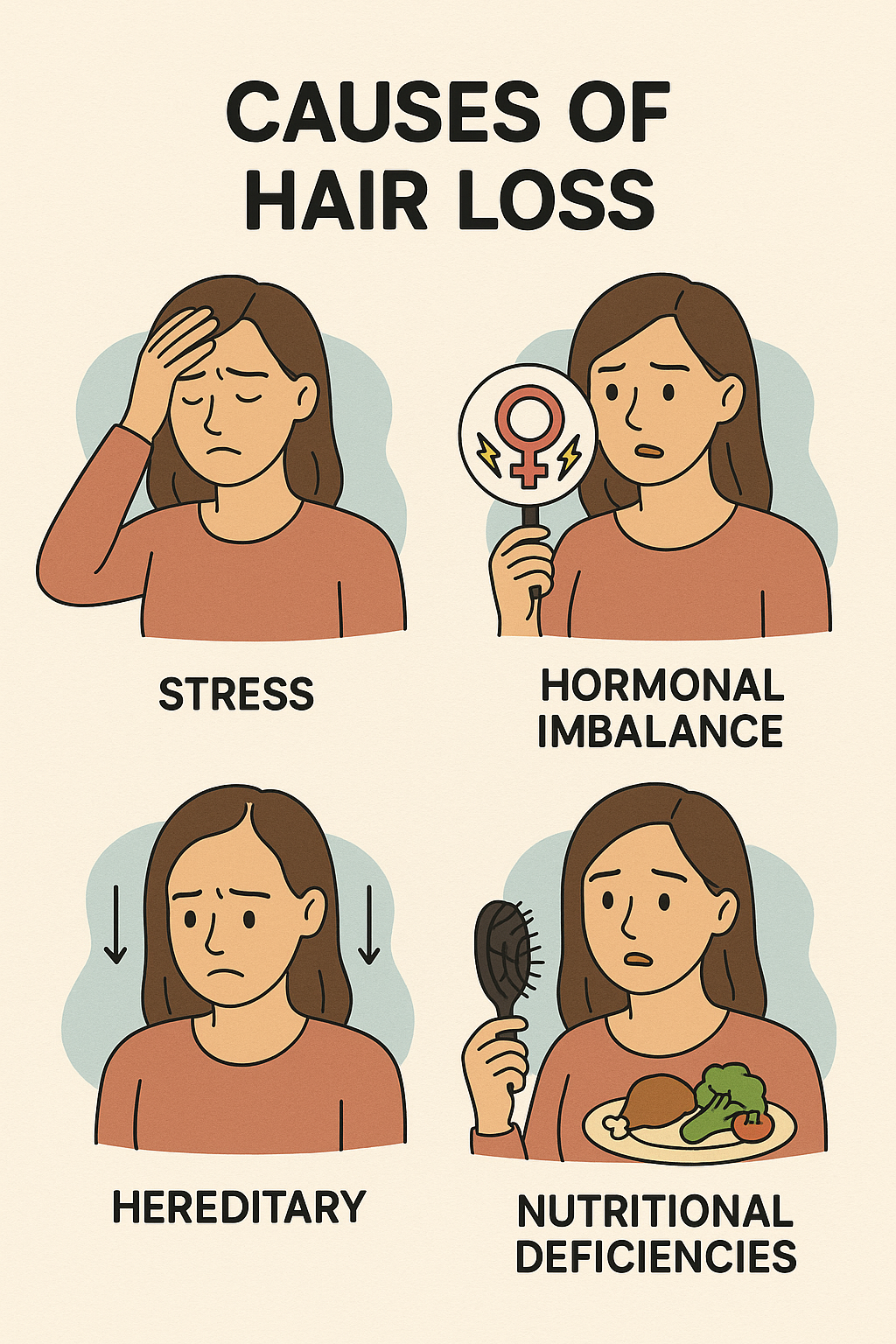Hair loss is a common concern affecting many people worldwide. It can impact self-esteem and confidence.
Fortunately, non-surgical hair restoration offers effective solutions. These techniques are less invasive than surgery.
They provide a range of options to address hair thinning and loss. From topical treatments to advanced therapies, choices abound.
Non-surgical methods are suitable for both men and women. They cater to those seeking alternatives to surgical procedures.
In this guide, we explore various non-surgical hair restoration techniques. Discover how they can help you regain hair confidence.
Understanding Hair Loss: Causes and Impact
Hair loss affects millions, but its causes vary. Genetics, hormonal changes, and stress are common factors. Different types of medical conditions can also lead to hair thinning.
The emotional impact of hair loss is significant. Individuals may experience low confidence and anxiety. These feelings can affect daily life and social interactions.
Understanding the causes is crucial for effective treatment. With knowledge, individuals can pursue tailored solutions. Early intervention often leads to better outcomes.
Common causes of hair loss include:
- Genetics
- Hormonal fluctuations
- Nutritional deficiencies
- Stress and lifestyle factors
A comprehensive approach is essential. Combining lifestyle changes with targeted treatments can prevent further loss. Learning about hair loss empowers individuals to take action.
What Is Non-Surgical Hair Restoration?
Non-surgical hair restoration encompasses various techniques. These methods aim to regrow hair without invasive surgery. They offer alternatives for those seeking minimal downtime.
Many prefer non-surgical options for their less intrusive nature. Techniques can include topical treatments, laser therapy, and more. They cater to diverse needs and preferences.
These treatments are generally safer and more affordable. They suit individuals hesitant about surgery. Consistency in treatment often brings the best results.
Key Benefits of Non-Surgical Hair Restoration
Non-surgical hair restoration methods offer several benefits. They provide a gentler approach compared to surgical procedures. This makes them accessible to many seeking hair regrowth.
These treatments often involve shorter recovery periods. People can return to their daily activities quickly. The reduced downtime is a significant advantage.
Additional benefits include:
- Cost-effectiveness
- Minimal side effects
- Customizable to individual needs
Non-surgical techniques can be personalized. They are designed to address specific hair loss issues effectively. Each method is tailored to maximize outcomes.
Popular Non-Surgical Hair Restoration Techniques
Non-surgical hair restoration offers a range of innovative methods. Each technique serves unique needs, providing effective hair loss solutions.
Some popular techniques include:
- Platelet-Rich Plasma (PRP) Therapy
- Low-Level Laser Therapy (LLLT)
- Topical Treatments
- Oral Medications and Supplements
- Scalp Micropigmentation (SMP)
- Hair Systems
- Microneedling
Platelet-Rich Plasma (PRP) Therapy
PRP therapy is an exciting development in hair restoration. This technique utilizes a patient’s own blood. The blood is processed to extract plasma rich in platelets.
These platelets contain growth factors. When injected into the scalp, they stimulate hair follicles. This can promote natural hair growth.
Patients often see increased hair density. PRP therapy is minimally invasive and relatively quick. It’s a promising option for many seeking non-surgical solutions.
Low-Level Laser Therapy (LLLT)
LLLT employs laser technology to treat hair loss. This therapy uses laser devices emitting low-level light. The light stimulates hair follicles to promote regrowth.
LLLT is painless and non-invasive. It often involves wearing a special cap or comb. Treatments are done at home or in a clinic.
Regular sessions can lead to thicker hair over time. LLLT is a user-friendly option and helps improve hair’s appearance. Consistency is crucial for best results.
Topical Treatments (Minoxidil and Others)
Topical treatments remain a cornerstone of hair restoration. Minoxidil is a well-known, FDA-approved option. It’s applied directly to the scalp.
Minoxidil works by improving blood flow to hair follicles. This can encourage thicker and stronger hair. It’s widely accessible and simple to use.
Other topical treatments exist. They often combine natural ingredients and modern science. These options cater to diverse hair needs.

Oral Medications and Supplements
Oral medications support hair health from within. They can address underlying causes of hair loss. A common medication is finasteride.
Supplements can complement treatments. They often include:
- Biotin
- Zinc
- Vitamin D
- Collagen
These nutrients strengthen hair. Supplements can improve overall hair quality. It’s important to consult a healthcare provider before starting.
Scalp Micropigmentation (SMP)
SMP offers a cosmetic approach to hair thinning. This technique involves tattooing the scalp. Tiny pigments create the illusion of fuller hair.
SMP does not grow hair. Instead, it enhances appearance by mimicking hair follicles. It suits those with thinning hair or receding hairlines.
This method requires precision. SMP is semi-permanent and offers a low-maintenance solution. Its visual impact is immediate.
Hair Systems and Cosmetic Solutions
Hair systems provide an instant solution. These include wigs, extensions, and hairpieces. They offer versatility in style and coverage.
Advantages of hair systems:
- Immediate results
- Variety in textures and colors
- Customizable for fit and look
Such solutions are practical for special occasions. They’re an option for those seeking reversible changes. Maintenance involves regular cleaning and adjustments.
Microneedling and Advanced Scalp Treatments
Microneedling uses tiny needles to stimulate the scalp. It enhances blood circulation and nutrient absorption. Often combined with topical products for better results.
This treatment can reduce hair thinning. Advanced scalp treatments include various therapies aimed at revitalizing hair.
These methods tend to be safe. They require professional administration for optimal outcomes. Both options enhance the scalp’s condition, boosting hair restoration efforts.

Combining Non-Surgical Hair Loss Solutions
Integrating various hair restoration techniques can optimize results. By combining methods, individuals can address multiple aspects of hair loss. This comprehensive approach often yields better outcomes.
For effective solutions, consider combining:
- PRP therapy with LLLT
- Topical treatments with oral supplements
- SMP for cosmetic enhancement
Tailoring the combination to individual needs is crucial. Consulting with a hair specialist ensures that treatment plans are effective and personalized. This strategy can maximize hair health and restoration success.
How to Choose the Right Non-Surgical Hair Restoration Option
Selecting the right hair restoration option requires careful thought. It’s essential to consider personal hair loss needs and goals. A thorough understanding of available options aids in this decision.
Consulting with a hair restoration specialist can provide personalized advice. Specialists have the expertise to assess individual hair health and recommend appropriate treatments. Such guidance is invaluable in making informed choices.
Key factors to consider when choosing:
- Severity and cause of hair loss
- Personal lifestyle and preferences
- Budget and time commitment
Each person’s situation is unique. Tailoring treatments to individual circumstances ensures the best chance for effective results.
What to Expect: Results, Maintenance, and Realistic Outcomes
Non-surgical hair restoration can deliver promising results. However, patience is key, as noticeable changes take time. Consistency in treatment is crucial for achieving optimal outcomes.
Maintenance is a vital part of the process. Regular follow-up and adherence to the prescribed regimen ensure lasting benefits. This commitment helps sustain the improvements achieved.
Realistic expectations set the foundation for satisfaction. Understanding potential outcomes prevents disappointment. Non-surgical options often yield subtle enhancements. Consider the following for balanced expectations:
- Gradual improvement rather than instant transformation
- Continuous effort for sustained progress
- Enhancement of existing hair quality
It is important to remember that results vary among individuals. Aligning hopes with likely outcomes leads to greater satisfaction with non-surgical treatments.
Frequently Asked Questions About Non-Surgical Hair Restoration
When considering non-surgical hair restoration, many questions arise. Addressing these queries helps in making informed decisions. Here are common concerns and their answers.
People often ask about the safety and effectiveness of these treatments. Generally, non-surgical methods are safe and bear minimal risks. Effectiveness varies based on individual factors like the cause and extent of hair loss.
Cost is another major consideration. Non-surgical options are typically more affordable than surgery. However, the total cost depends on the specific treatment and duration needed.
A few typical questions include:
- Are there side effects?
- How long before results appear?
- Can treatments be done at home?
Understanding these aspects can greatly aid in selecting a suitable hair restoration approach.
Conclusion: Taking the Next Step Toward Hair Confidence
Non-surgical hair restoration offers hope for those dealing with hair loss. It provides solutions without the need for surgery. By exploring these options, individuals can regain confidence and improve their well-being.
Taking the first step involves understanding your needs and consulting a specialist. Choose a method that aligns with your lifestyle and expectations. This journey could lead to renewed self-esteem and a happier life.



